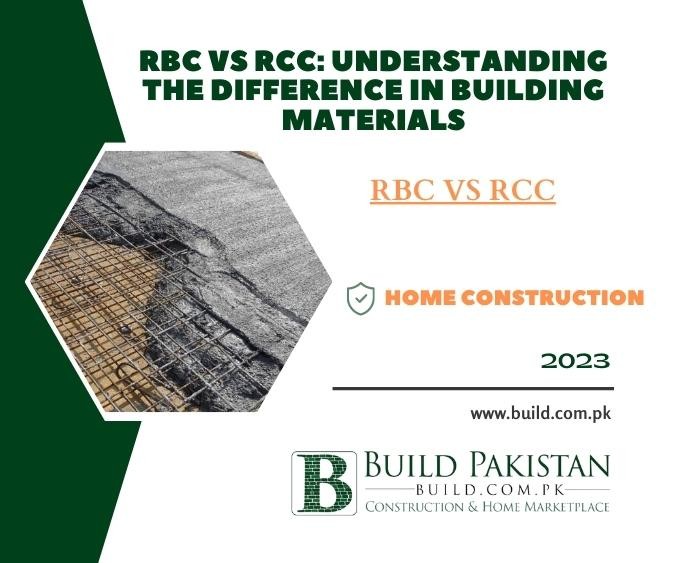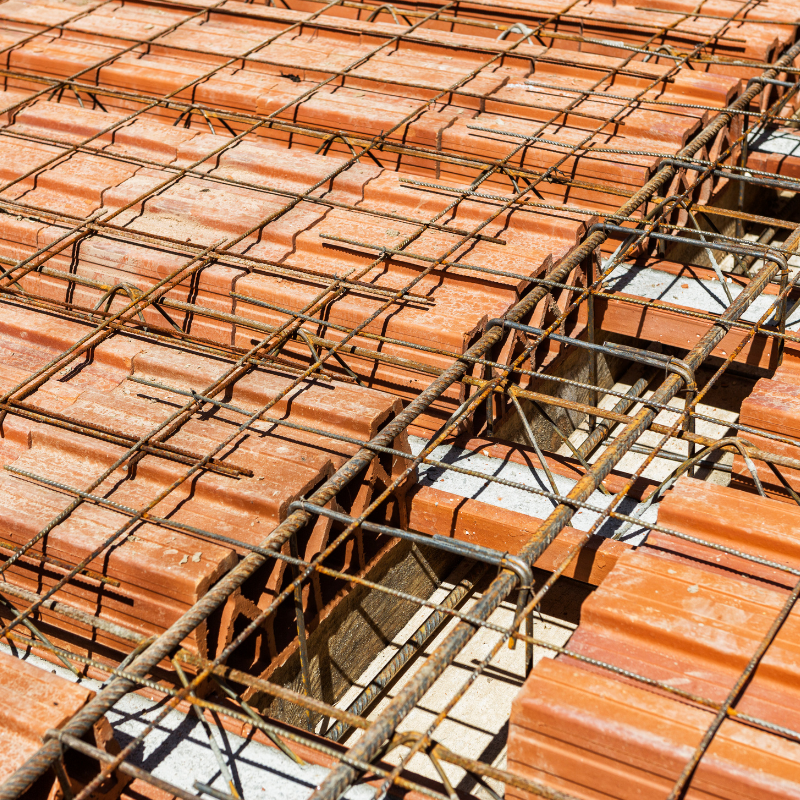RBC vs RCC: Understanding the Difference in Building Materials

Introduction:
When it comes to constructing durable and
resilient structures, the choice of building materials plays a crucial role. In
the construction industry, two commonly used materials are Reinforced Brick
Concrete (RBC) and Reinforced Cement Concrete (RCC). While they share some
similarities, there are distinct differences between the two. In this blog
post, we will explore the characteristics, applications, and advantages of RBC
and RCC, providing insights to help you make an informed decision for your
construction projects.
Reinforced Brick Concrete (RBC)
Reinforced Brick Concrete,
also known as Reinforced Masonry, is a construction technique that combines
bricks or concrete blocks with reinforced steel bars. Here are some key
features and benefits of RBC:
Construction Process:
RBC involves the use of bricks or
concrete blocks that are bound together using mortar. Reinforcement is added in
the form of steel bars, which are placed within the mortar joints or vertically
through the bricks or blocks.
Strength and Durability:
RBC structures offer good
compressive strength due to the use of bricks or concrete blocks. The
reinforcement provides additional tensile strength, enhancing the structural
integrity and durability of the construction.
Thermal Insulation:
Bricks have inherent thermal insulating
properties, making RBC structures relatively energy-efficient. They provide
better insulation against heat transfer compared to RCC structures, which can
be advantageous in regions with extreme temperature variations.
Cost-effectiveness:
RBC construction is often considered
cost-effective compared to RCC, as bricks and concrete blocks are readily
available and generally more affordable. Additionally, the construction process
may require less skilled labor and equipment.
Reinforced Cement Concrete (RCC)
Reinforced Cement Concrete,
commonly referred to as RCC, is a widely used construction material that
combines cement, aggregates, water, and steel reinforcement. Here are some
characteristics and advantages of RCC:
Construction Process:
RCC involves the casting of a concrete
mix consisting of cement, aggregates (such as sand and gravel), water, and
reinforcement (steel bars or mesh). The mixture is poured into formwork or
molds and allowed to cure and harden over time.
Strength and Structural Integrity:
RCC structures offer high
compressive strength, making them suitable for load-bearing applications. The
combination of cement and steel reinforcement provides excellent structural
integrity, allowing for larger spans and heights in construction.
Versatility:
RCC is a versatile building material that can be
molded into various shapes and sizes. It allows for flexibility in
architectural design, enabling the construction of complex structures with
curved or unique configurations.
Durability and Resistance:
RCC structures are known for their
durability and resistance to weathering, fire, and seismic forces. The
combination of cement, aggregates, and steel reinforcement creates a robust and
long-lasting construction.
Applications and Considerations
The choice between RBC and
RCC depends on several factors, including the intended application, structural
requirements, budget, and local construction practices. Here are some common
applications for each material:
RBC: RBC is commonly used in:
- Low-rise residential buildings
- Boundary walls and fences
- Interior partition walls
- Non-load-bearing structures
RCC: RCC is extensively used in:
- High-rise buildings and skyscrapers
- Bridges and flyovers
- Dams and water-retaining structures
- Foundations and structural slabs
It's essential to consider the local building codes and
regulations, site conditions, and the expertise of the construction team when
deciding between RBC and RCC for a specific project.
Conclusion:
Both RBC and RCC offer unique advantages and
applications in the construction industry. RBC provides cost-effectiveness and
thermal insulation properties, making it suitable for certain residential and
non-load-bearing structures. RCC, on the other hand, offers superior strength,
durability, and versatility, making it the material of choice for high-rise
buildings, bridges, and other load-bearing structures. Consider the specific
requirements of your construction project, consult with professionals, and
evaluate the suitability of RBC or RCC based on factors such as structural
needs, budget, and local building regulations.











